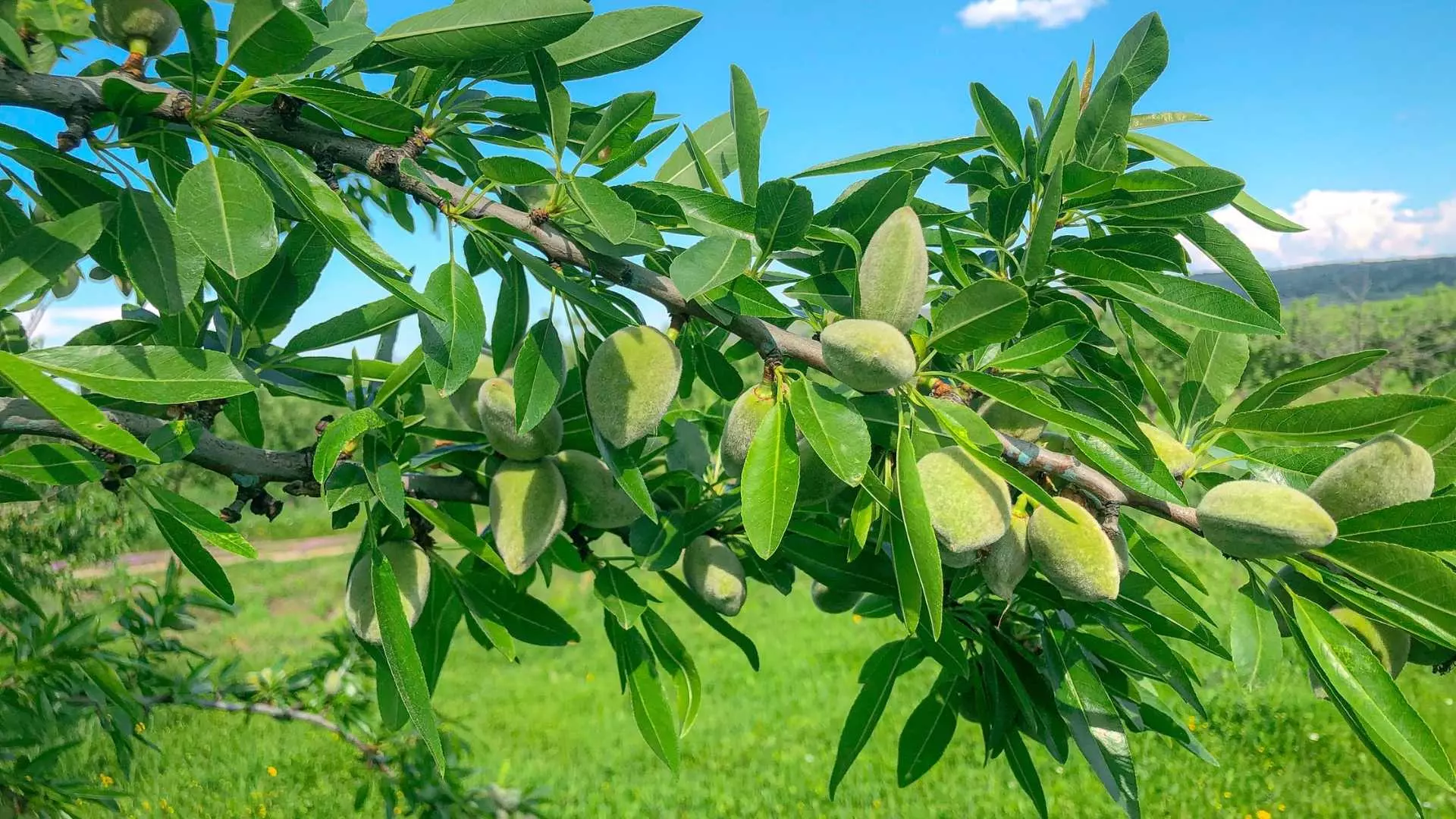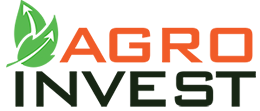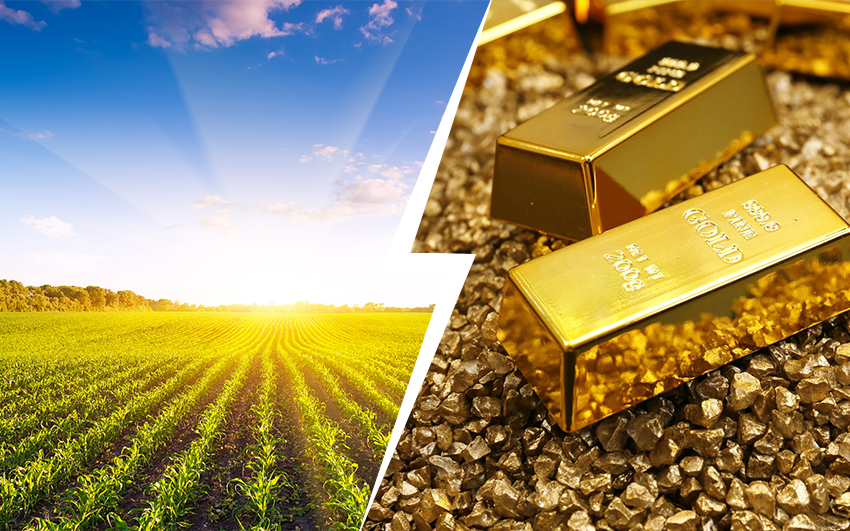Gold and farmland are two of the oldest asset groups in existence. Surprisingly, investing in agriculture has received little attention in recent years. However, a closer look could pay off because farmland has historically performed more consistently yearly than gold. Therefore, investors should consider investing in agriculture and investing in gold as attractive means to diversify their portfolios to achieve a balanced asset allocation. While agriculture investment and investment in gold can serve as portfolio diversifiers and inflationary hedges, farmland has consistently outperformed gold over time while offering many of the same advantages in a more appealing form. We’ll compare the value of gold and farmland based on a few important characteristics to help you see how they match up. These elements are essential aspects that can be the key to determining which asset you should trust.
Returns
Of course, gold is the most frequently used and acknowledged form of money, as well as a means of exchange and a store of value globally. In times of ambiguity, a hard asset like gold might be a beneficial wealth storage option. However, it isn’t yielding. Contrarily, investing in agriculture can yield valuable commodities with historically average yearly returns of between 11% and 13%. Besides, compared to gold, farmland has a lower correlation to publically traded markets.
Farmers are frequently pushed to produce more with less because a finite and decreasing amount of land is arable. As a result of having less land, farmers are striving to innovate in their farming operations and use technology to boost yields. Investors might see higher yields and greater profits along with an increase in the value of their investment as these initiatives become more accessible and well-known.
Inflation Hedge
Gold is a hedge against inflation but is not impervious to other unanticipated macroeconomic changes. Historically, gold prices rise when the dollar’s purchasing power falls. However, because gold is a premium commodity, investments aren’t always “recession-proof.” During a financial crisis, people don’t purchase jewelry or other expensive items that don’t matter as much as food and water. While gold has shown to be an efficient inflation hedge, farmland has consistently outperformed gold. Importantly, increased food costs frequently have a significant impact on inflation. Higher food commodity prices often translate to increased crop value, allowing the farmer to pay higher land rent rates. Additionally, while the need for food continues to rise, the amount of farmland available has declined. For these reasons, agriculture investment has historically provided stable yields and proven to be a highly effective inflation hedge.
Stability and Supply
Even while the supply of gold is not proliferating, it has been rising by a little over 1% yearly, and global gold mining adds around 2,500–3,000 tons of gold to the above-ground stock each year. Due to the enhanced profitability of mining operations, you will often notice that gold production increases as the demand for gold rises. As a result, the value of each ounce of gold may decrease as the supply grows. In contrast, as more land is developed for human use, the supply of agricultural land has been declining at a particularly troubling rate.
Compared to other asset groups, including gold, farmland is very stable. This “slow and steady” trait has produced disproportionate results, particularly in trying times. For example, farmland in the US returned almost 10% annually between 2005 and 2012, surpassing US Treasury securities, the Dow Jones, and the S&P 500.
This stability is furthered by the fact that agriculture investment yields food. Everyone needs to eat. Since we can’t avoid the necessity to feed a people, many experts contend that investing in agriculture is much more reliable than investing in gold. Every time a farmer sells the resources the land produces, they increase the value of the farmland. In essence, the land is valuable on its own, and the potential contribution of the crop increases revenue and returns on investment. This makes agriculture investment a much more stable investment than gold over the long term. Crop yields can generate significant additional income on your investment from year to year, even when the volatility is reduced.

Risk and Volatility
For the past three decades, gold has been a riskier investment than agribusiness, which is supported by statistical evidence. While gold prices have increased over time, significant volatility has led to losses as high as 32% in a single year. This indicates that the variance of gold’s monthly returns is higher than that of farmland. Contrarily, for the past 20 years or more, agriculture has produced positive total yearly returns each year. This is because farmland owners typically profit from annual crop harvests and land value growth. Farmland has therefore generated higher returns with much lower volatility than gold.
It would be reasonable to anticipate that gold will continue to be riskier than agriculture investment in the future. In a nutshell, an investor should be aware that, as compared to farmland, gold is a riskier investment, according to the variance over the previous three decades. Gold is regarded as a high-grade, safe haven asset, yet this description also seems realistic for farmland. Furthermore, because most agriculture investment risk can be distributed, it adds minimal risk to a diversified portfolio of stocks and bonds. Farmland could be added to a portfolio as a high-return asset with minimal additional risk since it possessed two favorable characteristics: a high total return and minimal correlation with other assets.
The Road to Investing in Agriculture
Undoubtedly, gold is a good option if you want to diversify your portfolio or hedge against inflation. Gold is a good counter-cyclical asset and a dependable store of wealth, as demonstrated by historical data. But in addition to the same advantages, agriculture generates financial returns. Holding real assets through agriculture investment is a question of “how much” for the astute investor. With Agro Invest Spain, you can buy land in Spain for almond investment and get full ownership, which is not possible with other agricultural investment platforms. Additionally, with our almond investment, you are the sole proprietor of the harvested commodities. When you invest in Spain with our managed farmland model, the labor is handled by our expert farm management firm. In addition, you profit financially from the annual harvest sales and the increase in the value of the land. To invest in Spain now, contact our advisory team or join our webinar series to learn more.
All rights of this content prepared by Api Group Agro Inversiones SL (“API Group”) belong to API Group. These rights are protected and the partial or complete copying, reproduction, distribution, processing or use of the content in any way without permission and without reference will result in legal and criminal liability of individuals.

